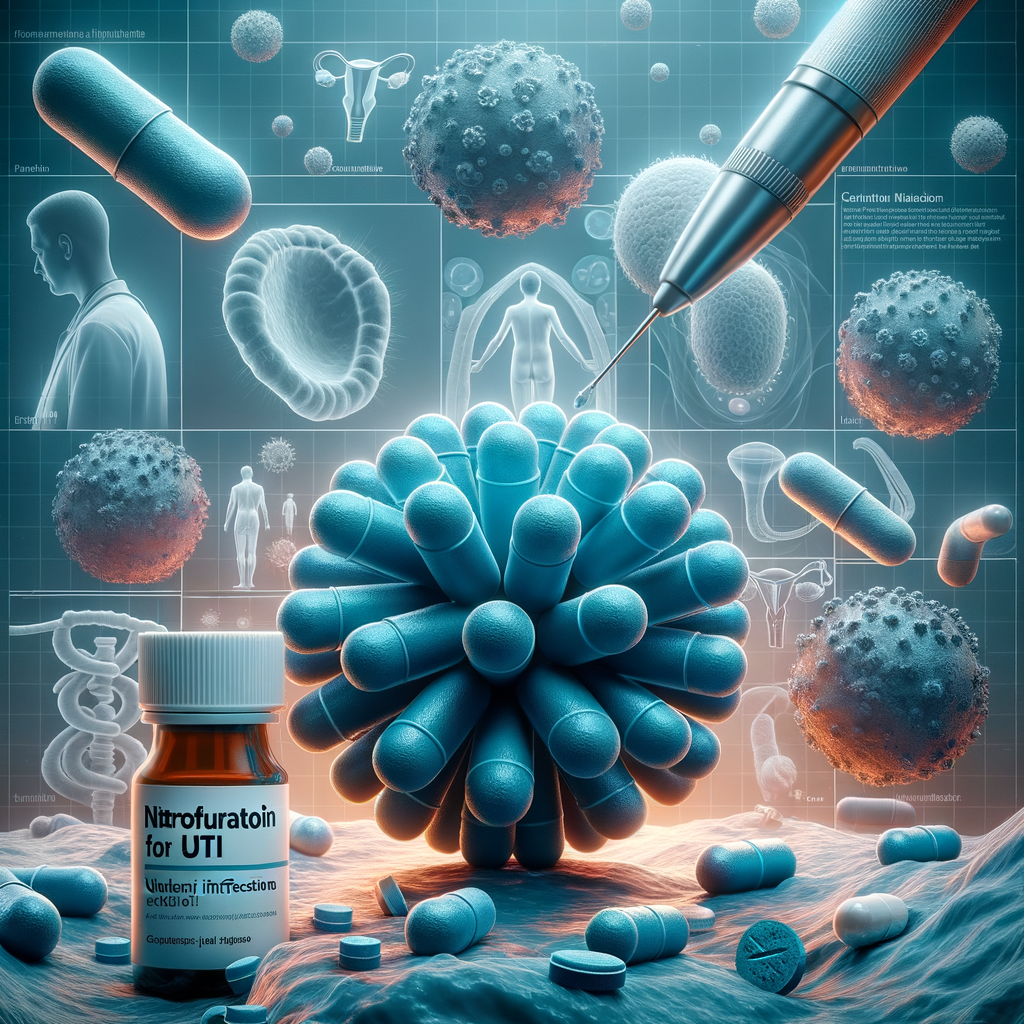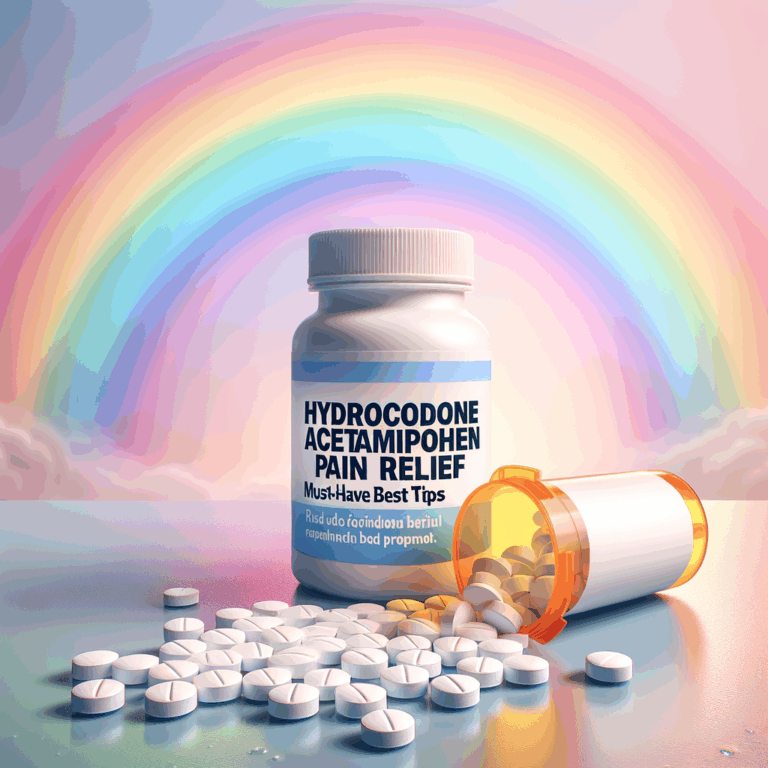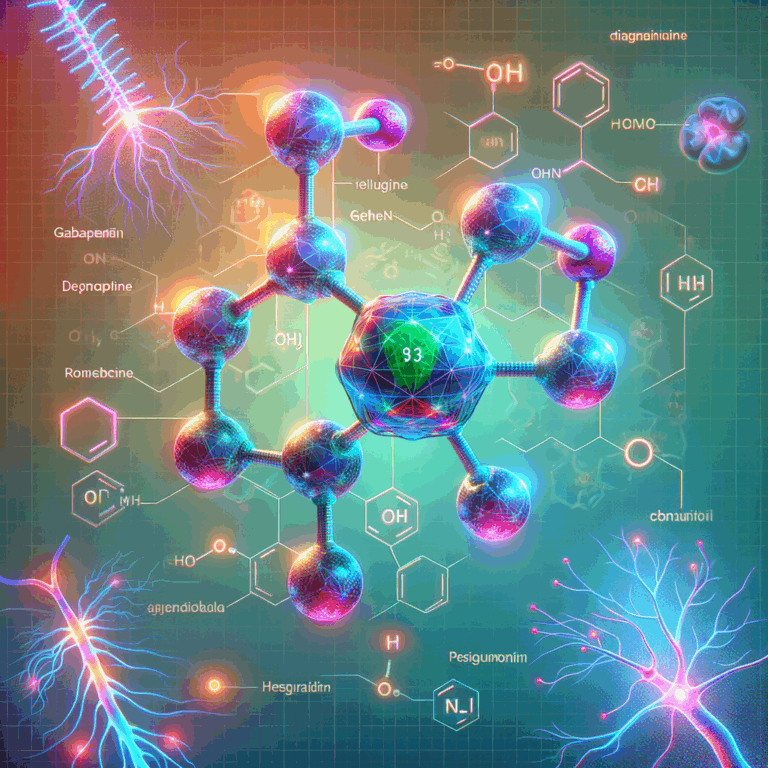
- Introduction
- What Is Nitrofurantoin?
- How Nitrofurantoin Works
- Why Clinicians Choose Nitrofurantoin for UTI
- Types of UTIs and Nitrofurantoin Uses
- Effectiveness: What the Evidence Shows
- How to Take Nitrofurantoin
- Common Dosage Table
- When Not to Use Nitrofurantoin
- Side Effects and How to Manage Them
- Common Side Effects
- Serious but Rare Side Effects
- Safety in Pregnancy and Breastfeeding
- Use in Children and Older Adults
- Drug Interactions and Contraindications
- Resistance Patterns and Why They Matter
- Comparing Nitrofurantoin to Other UTI Antibiotics
- Quick Comparison Table
- Practical Tips for Patients
- When to See a Doctor
- Monitoring While on Nitrofurantoin
- Special Situations: Recurrent UTIs and Prophylaxis
- Cost, Availability, and Generic Options
- Myths and Misconceptions
- Real-World Experiences and Patient Stories
- Future Directions and Research
- Summary: When Nitrofurantoin for UTI Makes Sense
- Frequently Asked Questions (FAQs)
- References
Introduction
Urinary tract infections (UTIs) cause discomfort and disrupt daily life. Fortunately, nitrofurantoin for UTI offers reliable, targeted relief. This medicine has helped millions overcome uncomplicated bladder infections. In addition, it often works when other antibiotics fail.
This article explains nitrofurantoin in clear terms. You will learn how it works, who should use it, and what side effects to expect. Also, we cover dosing, special populations, and resistance trends. By the end, you will feel confident discussing nitrofurantoin with your clinician.
What Is Nitrofurantoin?
Nitrofurantoin is an antibiotic that targets bacterial infections in the urinary tract. Doctors often prescribe it for uncomplicated cystitis, which affects the bladder. It belongs to the nitrofuran chemical class and acts differently than many other antibiotics.
The drug comes in two main formulations: macrocrystalline and monohydrate/macrocrystals combined. These forms affect absorption and tolerability. Moreover, nitrofurantoin concentrates in urine, making it effective for bladder infections but less useful for kidney infections.
How Nitrofurantoin Works
Nitrofurantoin kills bacteria by interfering with several bacterial enzymes. This action disrupts DNA, RNA, and cell wall synthesis. As a result, bacteria cannot replicate or survive.
Because it affects multiple targets, bacteria find it harder to develop resistance. Also, nitrofurantoin rapidly concentrates in urine, delivering high levels where bacteria live. Therefore, it works best for lower urinary tract infections rather than systemic infections.
Why Clinicians Choose Nitrofurantoin for UTI
Clinicians often pick nitrofurantoin for several reasons. First, it targets common UTI bacteria, such as E. coli, effectively. Second, it reaches high concentrations in urine while minimizing systemic exposure. Third, it has a relatively narrow spectrum, which helps preserve the gut microbiome.
Furthermore, many guidelines recommend nitrofurantoin as a first-line option for uncomplicated cystitis. This recommendation stems from its efficacy and low rates of resistance in many regions. Consequently, it remains a mainstay in UTI management.
Types of UTIs and Nitrofurantoin Uses
Not all UTIs are the same. Researchers categorize infections into uncomplicated and complicated types. Uncomplicated UTIs occur in healthy people without structural urinary issues. Nitrofurantoin works very well for these cases.
Complicated UTIs involve anatomical problems, stones, catheters, or weakened immune systems. In those situations, clinicians often choose broader-spectrum antibiotics or perform further testing. Additionally, nitrofurantoin does not achieve reliable kidney tissue levels. Therefore, doctors avoid it for pyelonephritis, a kidney infection.
Effectiveness: What the Evidence Shows
Clinical trials and observational studies support nitrofurantoin for uncomplicated cystitis. Many randomized trials show cure rates similar to other first-line antibiotics. Furthermore, nitrofurantoin often causes fewer collateral effects on gut bacteria.
Population studies also show low resistance rates to nitrofurantoin among E. coli in many countries. However, resistance can vary by region and over time. Thus, local susceptibility patterns should guide antibiotic choice. In short, nitrofurantoin remains effective in many settings.
How to Take Nitrofurantoin
Nitrofurantoin comes in multiple dosage forms. The two main ones are immediate-release capsules and extended-release formulations. Clinicians choose the formulation and dose based on the infection and patient factors.
For adults with uncomplicated cystitis, common regimens include 50–100 mg taken four times daily for five days. Alternatively, the extended-release form may be given as 100 mg twice daily. Always follow a clinician’s instructions and complete the prescribed course. Stopping early can lead to relapse or resistance.
Common Dosage Table
| Population | Formulation | Typical Dose | Duration |
|---|---|---|---|
| Adult, uncomplicated cystitis | Immediate-release | 50–100 mg every 6 hours | 5 days |
| Adult, uncomplicated cystitis | Extended-release | 100 mg twice daily | 5 days |
| Some older adults | Depends on renal function | Not recommended if low GFR | Varies |
When Not to Use Nitrofurantoin
Clinicians avoid nitrofurantoin in certain situations. First, patients with creatinine clearance below a threshold (often <30–60 mL/min) should not use it. Reduced kidney function limits drug concentration in urine and increases toxicity risk.
Second, doctors do not use nitrofurantoin for suspected kidney infections. The drug poorly penetrates renal tissue. Third, it should not treat severe systemic infections. For those, clinicians choose antibiotics that reach bloodstream and tissues well.
Side Effects and How to Manage Them
Nitrofurantoin can cause side effects. Common reactions include nausea, headache, and mild gastrointestinal upset. Taking the drug with food can reduce stomach discomfort. If side effects persist, contact your clinician.
More serious effects occur rarely but require prompt attention. These include allergic reactions, pulmonary problems, liver injury, and peripheral neuropathy. Immediately stop the drug if you experience breathing trouble, jaundice, or numbness. Report such symptoms to your healthcare provider at once.
Common Side Effects
– Nausea and vomiting
– Headache
– Dizziness
– Dark yellow or brown urine (harmless)
Serious but Rare Side Effects
– Pulmonary inflammation or fibrosis
– Peripheral neuropathy (tingling or numbness)
– Hepatotoxicity (liver injury)
– Severe allergic reaction (anaphylaxis)
Safety in Pregnancy and Breastfeeding
Clinicians often use nitrofurantoin during pregnancy, particularly for cystitis. However, they avoid it near term in some cases because of neonatal jaundice concerns. Most guidelines consider nitrofurantoin safe in pregnancy when no better alternatives exist.
During breastfeeding, nitrofurantoin appears in low amounts in breast milk. Generally, it poses minimal risk to infants. Still, mothers should monitor babies for side effects like rash or diarrhea. Always consult a clinician before using antibiotics while pregnant or nursing.
Use in Children and Older Adults
Pediatricians sometimes prescribe nitrofurantoin for children with uncomplicated UTIs. Clinicians calculate doses based on weight. They avoid it in infants younger than one month due to risk of hemolytic anemia in newborns.
Older adults require cautious use. Age often correlates with decreased kidney function. Therefore, clinicians check renal function before prescribing. Also, older adults may face higher risk of pulmonary or neurologic side effects. Close monitoring helps detect problems early.
Drug Interactions and Contraindications
Nitrofurantoin interacts with only a few drugs, but interactions matter. Antacids that contain magnesium trisilicate may reduce nitrofurantoin absorption. Additionally, some medications that affect kidney function can alter nitrofurantoin clearance.
Contraindications include known hypersensitivity to nitrofuran derivatives. Also, as noted, severe renal impairment often precludes its use. Populate your medication list in discussion with your clinician to avoid surprises.
Resistance Patterns and Why They Matter
Bacterial resistance patterns shape antibiotic choices. Fortunately, nitrofurantoin maintains low resistance rates for common UTI pathogens in many regions. Its multi-target action contributes to this durability.
Nevertheless, resistance can grow in localized settings or over time. Surveillance programs monitor susceptibility. Thus, clinicians adapt their prescribing to current trends. Likewise, patients should complete therapy and avoid unnecessary antibiotic use to limit resistance spread.
Comparing Nitrofurantoin to Other UTI Antibiotics
Many antibiotics treat UTIs, including trimethoprim-sulfamethoxazole, fosfomycin, and fluoroquinolones. Each drug offers pros and cons. Nitrofurantoin provides high urine concentrations and limited impact on gut flora.
Compared with fluoroquinolones, nitrofurantoin carries fewer systemic risks. Compared with trimethoprim-sulfamethoxazole, it often shows lower resistance in some areas. Fosfomycin offers single-dose therapy, while nitrofurantoin requires multiple doses. Clinicians weigh these factors when choosing therapy.
Quick Comparison Table
| Feature | Nitrofurantoin | Trimethoprim-Sulfamethoxazole | Fosfomycin |
|---|---|---|---|
| Typical use | Uncomplicated cystitis | Uncomplicated cystitis | Uncomplicated cystitis |
| Resistance concerns | Low to moderate | Often higher | Variable |
| Dosing | Multiple doses over days | Multiple doses over days | Single dose often |
| Kidney infection suitability | No | Often yes | Limited |
Practical Tips for Patients
Take nitrofurantoin exactly as prescribed. Do not skip doses or stop early, even if symptoms improve. Completing the course reduces relapse risk and resistance.
Drink plenty of fluids while on therapy, unless your clinician advises otherwise. Also, take the medicine with food to reduce stomach upset and improve absorption. If you miss a dose, take it as soon as you remember. Do not double the next dose.
When to See a Doctor
Seek care if symptoms worsen or fail to improve in 48–72 hours. Also, contact your clinician for fever, flank pain, or nausea and vomiting. Those signs may indicate a kidney infection requiring broader therapy.
Additionally, seek help for severe side effects like breathing difficulty, chest pain, numbness, or jaundice. These symptoms need urgent medical evaluation. If you suspect an allergic reaction, stop the medication and seek immediate care.
Monitoring While on Nitrofurantoin
Most people need minimal monitoring for short courses. However, clinicians may check kidney function in older adults and patients with comorbidities. For long-term prophylactic use, periodic monitoring becomes more important.
Also, tell your clinician about any new symptoms during therapy. For example, persistent cough or new neurological signs warrant evaluation. Early detection prevents permanent damage in rare serious cases.
Special Situations: Recurrent UTIs and Prophylaxis
Patients with recurrent UTIs may need preventive strategies. In some cases, clinicians use low-dose nitrofurantoin as prophylaxis. Typically, this involves nightly doses for months.
However, clinicians weigh benefits and risks before recommending long-term prophylaxis. Long-term use increases the chance of side effects. Additionally, it may alter resistance patterns. Therefore, doctors prefer targeted approaches like behavioral changes and addressing underlying urinary issues.
Cost, Availability, and Generic Options
Nitrofurantoin often exists in generic form, making it affordable. Pharmacies usually stock immediate-release and extended-release versions. Insurance coverage varies, so costs differ by plan and region.
Generic nitrofurantoin provides the same active ingredient as brand-name products. Thus, many patients use generics to reduce expenses. If cost or availability becomes an issue, ask your clinician or pharmacist for alternatives.
Myths and Misconceptions
Some people believe nitrofurantoin cures kidney infections. This belief is incorrect. The drug reaches high urine levels but poor kidney tissue levels, so it does not treat pyelonephritis reliably.
Another myth claims nitrofurantoin is unsafe in pregnancy. In fact, clinicians use it when appropriate, with caution around delivery. Talk with your clinician to clarify any safety concerns during pregnancy or breastfeeding.
Real-World Experiences and Patient Stories
Many patients report quick symptom relief within 24–48 hours of starting nitrofurantoin. They note reduced urgency and pain soon after treatment begins. Others appreciate fewer gastrointestinal side effects compared with other antibiotics.
However, some patients experience persistent symptoms or develop side effects. A few report allergic reactions or allergic-like skin rashes. If you encounter unusual reactions, stop the drug and contact your clinician promptly.
Future Directions and Research
Researchers study new uses and formulations for nitrofurantoin. They investigate optimal dosing strategies to reduce side effects while preserving efficacy. In addition, studies monitor resistance trends in various communities.
Scientists also explore combination therapies to improve outcomes. Meanwhile, surveillance programs continue to track nitrofurantoin susceptibility worldwide. These efforts help clinicians make informed prescribing choices.
Summary: When Nitrofurantoin for UTI Makes Sense
Nitrofurantoin for UTI serves as a trusted option for uncomplicated bladder infections. It provides focused urine concentrations and often spares the gut flora. Moreover, it shows good efficacy against common UTI bacteria in many regions.
Nevertheless, clinicians avoid it for kidney infections and in patients with significantly reduced renal function. Patients should follow dosing instructions, watch for side effects, and seek care if symptoms worsen. Overall, nitrofurantoin remains a must-have tool in UTI treatment.
Frequently Asked Questions (FAQs)
1. Is nitrofurantoin effective for kidney infections?
– No. Nitrofurantoin does not reach effective levels in kidney tissue. Doctors prefer other antibiotics for pyelonephritis.
2. Can I take nitrofurantoin with other antibiotics?
– Sometimes. Your clinician will assess interactions and the infection type before combining antibiotics.
3. How fast does nitrofurantoin relieve UTI symptoms?
– Many people feel better within 24–48 hours. However, complete courses reduce relapse risk.
4. Does nitrofurantoin cause dark urine?
– Yes. The drug can turn urine yellow or brown. This change is usually harmless.
5. Can men use nitrofurantoin for UTIs?
– Men can use it for uncomplicated lower UTIs. However, doctors often evaluate men more thoroughly due to higher complication risk.
6. Is nitrofurantoin safe for people with diabetes?
– It can be, but clinicians consider kidney function and other health issues before prescribing.
7. Will nitrofurantoin affect my birth control?
– No evidence shows nitrofurantoin reduces hormonal contraceptive effectiveness.
8. Can I drink alcohol while taking nitrofurantoin?
– Alcohol does not directly interact, but avoid excessive drinking. Alcohol can mask side effects and delay recovery.
9. What should I do if I miss a dose?
– Take the missed dose when you remember. Do not double doses to catch up.
10. How long can someone safely take nitrofurantoin for prophylaxis?
– Clinicians sometimes use it for months with monitoring. However, they weigh risks and alternatives for long-term use.
References
– Hooton TM, et al. Clinical practice guideline for the treatment of acute uncomplicated cystitis. Clinical Infectious Diseases. https://academic.oup.com/cid/article/52/5/e103/299664
– Gupta K, et al. International clinical practice guidelines for antibiotic use in uncomplicated UTI. Journal of Antimicrobial Chemotherapy. https://academic.oup.com/jac/article/72/6/1730/2573197
– NHS England. Nitrofurantoin – drug information and guidance. https://www.nhs.uk/medicines/nitrofurantoin/
– Centers for Disease Control and Prevention. Urinary tract infection (UTI) information. https://www.cdc.gov/antibiotic-use/community/for-patients/common-illnesses/uti.html
– Hsia Y, et al. Global antibiotic resistance and nitrofurantoin susceptibility. World Health Organization reports. https://www.who.int/
Note: This article offers general information and does not substitute for medical advice. Always consult your healthcare provider before starting or stopping any medication.



